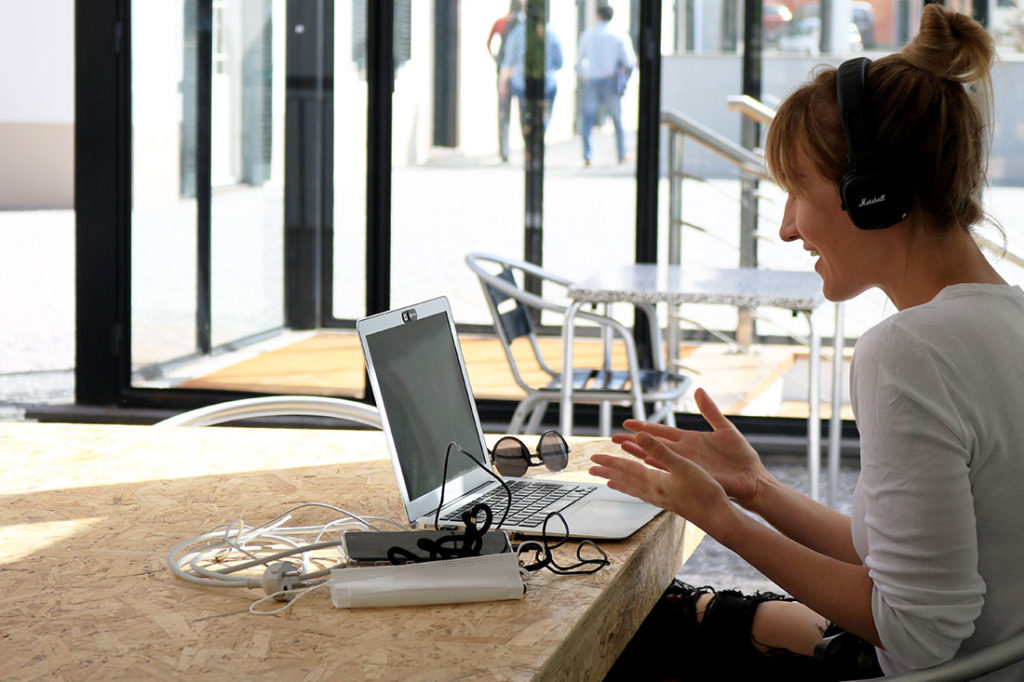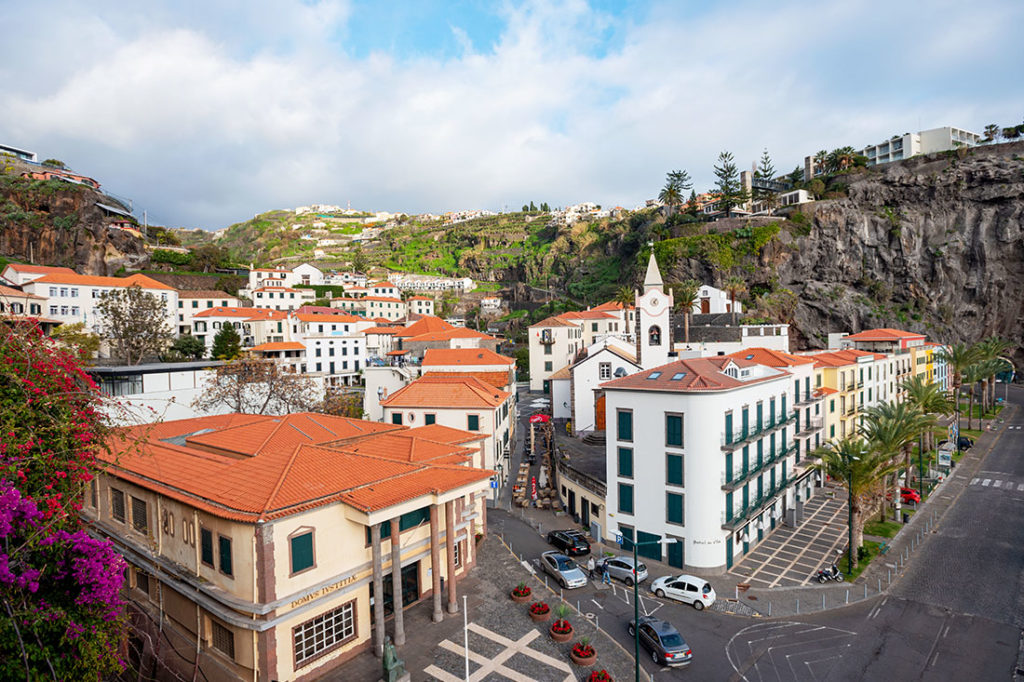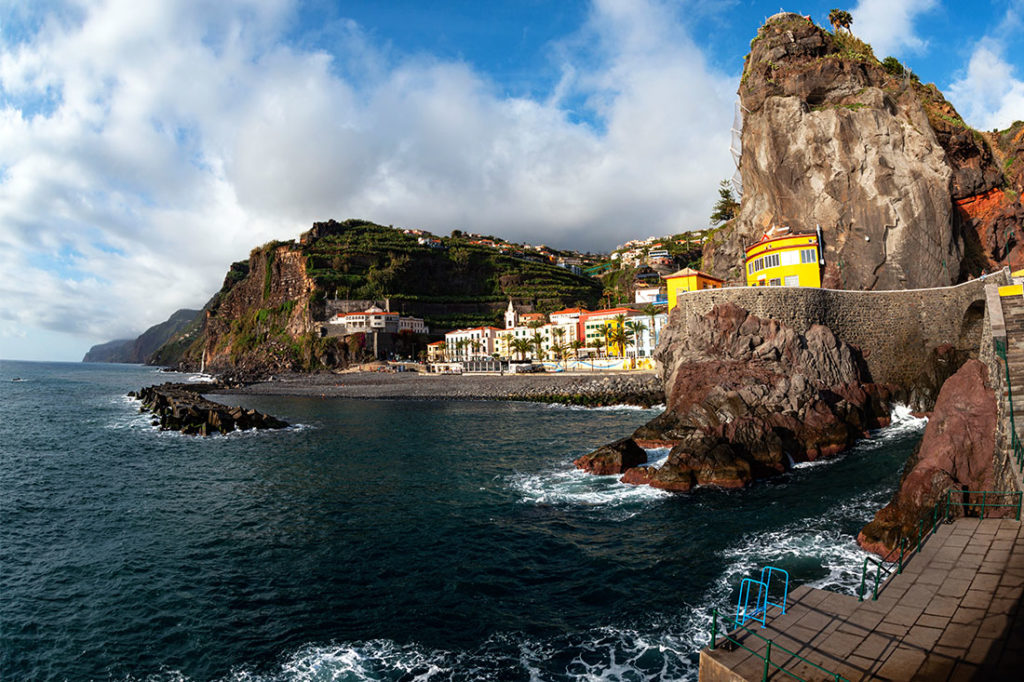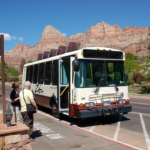On a small island off the coast of Portugal, a community unlike almost anything else in the European Union exists. Here, a striking blue stretch of ocean laps at the volcanic shore while mountains climb out of the water below. And situated on the south coast of the island, in a small municipality called Ponta do Sol, is Digital Nomads Madeira Islands—the EU’s first digital nomad village.
Since the concept of “digital nomads” gained momentum starting in the ’90s, there have been those who predicted this as the future of work. The internet offered such an ease of communication and connection, they reasoned, that soon workers wouldn’t need to be tethered to their desks or their bosses.
That shift away from the office happened relatively slowly. Then the pandemic hit, and the nomads’ numbers skyrocketed.

In 2019, 7.3 million Americans identified as digital nomads, according to data from MBO Partners. That number rose sharply in 2020 to an estimated 10.9 million, and again in 2021, with an estimated 15.5 million self-identified digital nomads in the U.S. alone—a 112% increase in pre-pandemic totals.
And as the number of remote workers and digital nomads increases, so too does the varied list of unique locations and experiences waiting to host them. Want to take your remote work on the water? There are digital nomad cruises. Digital nomad van life communities like Kibbo create communities for the skyrocketing number of camper van and RV owners looking to take their work on the road. And if you’re not sure where to go, or for how long, there are companies like Remote Year, which offer everything from weeklong retreats to yearlong journeys in Asia, Europe, Africa and Latin America.
And then, there are digital nomad villages—a new concept, but one in which nomads and organizers see immense potential. In addition to Digital Nomads Madeira Islands, there’s Digital Nomad Valley Zadar in Croatia, which made its debut in October 2021.
Micaela Vieira, project manager at Startup Madeira, explains that Digital Nomads Madeira Islands was pitched as a pandemic pilot project. With so many people stuck working in their homes due to COVID lockdowns, Vieira says the idea was to come and work from Madeira instead. They launched a website in November 2020. By January, they were getting 300 registrations a day.
Mario Mrkša, CEO of Work Remotely Croatia, says that for many years, the most well-known hubs for digital nomads have been in South America and Southeast Asia. To his point, Thailand, Sri Lanka and Singapore topped one 2021 list of the best countries for digital nomads, followed by Cambodia, Maldives, Indonesia and Malaysia.

“Now, all of a sudden, I think Europe became much more attractive,” Mrkša says.
That’s not accidental. Croatia and Portugal are among the European countries courting remote workers with so-called “digital nomad visas,” which have generated “worldwide hype,” according to the website Expat in Croatia. Tourist visas typically only last for a period between 30 and 90 days, but digital nomad visas are valid for a period that can be as long as two or three years, depending on the country.
As with the rapid rise in remote work accelerated by the pandemic, these visas were spurred on by countries with big tourism economies hoping to make up revenue lost due to COVID-19. First introduced in summer 2020 in Estonia, these days at least 21 countries—including Barbados, Greece and Norway—have introduced their own “remote work visas” or “freelancer visas” to entice international workers.
But although these new nomad visas are an exciting development, Jessica Esa, founder of the remote work website Nomad Finance and Freedom, says there’s more to adopting the nomad lifestyle than getting your paperwork in place. “These visas are popping up, so people are going to be able to live in different countries,” she says, “but not everyone’s ready for that step without a bit of a pathway to help.”
Finding an Airbnb, securing a coworking space and figuring out everything else you’ll need as a nomad can be daunting in a new country, she says, especially when you may not speak the language or know what to look for. It’s something that might put off some would-be nomads, and it’s where digital nomad villages come in, going one step further than the visa alone to offer a total package to remote workers.
Esa notes that especially if you work for a company rather than being self-employed, you need to have Wi-Fi and a reliable, available workspace, something that’s not always guaranteed at an Airbnb or a cafe. She’s arrived at rentals in the past only to discover that the Wi-Fi was weak or nonexistent, which means she had to rely on data—a costly problem for those putting in several hours of work a day.
“Villages give you the perfect environment where you’re working, you’ve got a good setup, you’ve got reliable Wi-Fi—everything you need from an office—so you kind of don’t have to worry about that,” she says.
And the draw of digital nomad villages goes beyond logistics. Although their villages are separated by thousands of miles, Mrkša and Vieira agree that there’s something else enticing remote workers: the promise of community.
“The community aspect is the one that’s most meaningful,” says Mrkša, who was born and raised in Croatia.
Although Croatia’s nomad village is also a pilot program, he sees a lot of potential for it to grow and expand in the future. Their project is something of a case study, but they’ve received promising feedback. It’s a win-win, he says: an off-season boost for Croatia’s economy and a chance for nomads to explore during a less-crowded season, which he thinks many of them prefer to the bustling, tourist-heavy times.
“The tourism industry is for the summer, and I see with digital nomads and remote workers that, quite often, they don’t like crowded spaces at the peak of the season,” Mrkša says. Remote workers are interested in a more relaxed environment, “something between tourists and locals.”
And Esa adds that the villages are enticing for a reason you might not expect from this group of traveling workers. Although they’re known as “nomads,” many crave some sense of stability and certainty. “People do want a little bit of normality,” she says. “Even though this lifestyle is unusual, it doesn’t mean you don’t want to wake up in the same place and have a bit of a community around you.”
Vieira, who was born and raised in Madeira, says that the goal now is to grow—but to do so sustainably. “What I mean by this is we have to give time to the local private entities to also grow, adapt, create new solutions,” with the end result being the project can keep going for years to come. The authenticity of the destination is as crucial to organizers as having reliable Wi-Fi.
“Nomads are coming here for the hospitality of the people, for the nature, for the climate, for the food—of course, the food,” she says with a laugh. “In the end, they can support the great community already being built.”
Digital nomad villages are a new concept, and there may not be all that many of them yet, but Esa says there’s a lot of excitement around them in her community. “It’s obviously the future, in many ways,” she says. Even if they’re not nomads, many people are now working from home part time or taking advantage of workcations (something the Washington Post proclaimed as “the new vacations” in July 2021). “I think it’s really smart to be putting these [villages] in to make the lifestyle a bit easier for people.”
“We believe it’s the future,” says Mrkša, adding that though there can be benefits to working in an office environment, “the companies that want to attract top talent, they’ll definitely need to offer the possibility to work remotely.”
The interest in Digital Nomads Madeira Islands has been overwhelming; between November 2020 and January 2022, Vieira says they received more than 10,580 registrations from 111 countries—and they’ve already decided the program will continue for at least three years. Now, they’re looking for new ways to involve new communities on the island; already they’ve introduced “nomad escapes,” short-term trips to other cities in Madeira such as Porto Santo.
“We know there are other locations in Madeira that are more than available to welcome digital nomads, and we’ve already seen that happening,” Vieira says. They hear from people every day saying how amazing it is to live and work there, “and 90% of these people never heard about Madeira before. Having this reaction is really good.”
This article originally appeared in the May/June 2022 Issue of SUCCESS magazine. Photos courtesy of Digital Nomads Madeira Islands.










